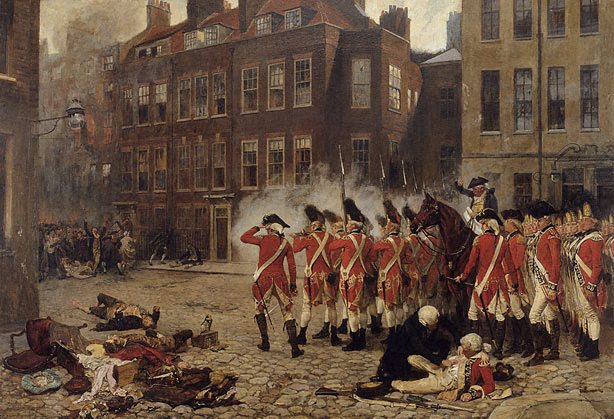
London’s Burning
In the year 1780, London experienced one of the worst series of riots in the capital’s history. Between the 2nd and 7th of June, crowds estimated between 40-60,000 attacked parliament buildings in Downing street, demanding the repeal of the “The Papacy Act”, a minor piece of legislation designed to reduce discrimination against Catholics by abolishing the requirement of recruits to the British army (mostly Irish and Scottish men of the lower orders.) to swear a religious oath of loyalty to the British Crown. At the time, Britain was desperately short of conscripts to send to her American colonies, in order to put down a national uprising there against tax impositions for the Crown.
London’s insurrection was led by an unlikely figure, Lord George Gordon, an MP and President of the London Protestant Association, an eccentric and obsessional religious bigot, who supported the cause of the American colonists. By the time the violence he wrought in the capital had abated, some 285 citizens had been shot and a further 200 seriously wounded. Over 450 rioters were arrested and 30 executed for treason.
In his novel Barnaby Rudge, Charles Dickens condemned the rioting as a “moral plague”. Even John Wilkes, a notorious radical, did so, siding firmly with the Establishment in this instance. Historians have calculated that the destruction of property in the city was comparable to the Blitz of the Second World War. It did little to further the popularity of the cause, then.
Rioting focused on 10 Downing Street, the official residence of the unpopular and incompetent Prime Minister, Lord North. Houses in Clerkenwell and Leicester Square were looted and gutted. Criminals held in New Gate prison were released by “His Majesty, King Mob”. The districts of Moorgate and Soho, districts with large populations of Irish migrants and other foreigners, were burned to the ground. The chapels of the Sardinian Embassy in Lincoln Inn’s fields, together with the Bavarian Embassy, were also reduced to ashes.
As well as bigotry, the savagery of Gordon’s mob had economic, social and international dimensions. In addition to her problems with the Americans, Britain was also at war with the French, Spanish and Dutch. Her foreign trade was falling. Unemployment, particularly in London and the channel ports, was dangerously high, with wages being slashed. The pattern of rioting clearly reflects these factors – the targeting of upper-class housing and businesses together with areas of migrant labour. War with Spain resurrected the old fear of Popery.
The riots also undermined the authority of the King (George III) and the institution of constitutional monarchy at a crucial period of Anglo-American relations whilst seeming to enhance the view of kingship as tyrannical. London had no police force, so the government was compelled to try and restore order using a smattering of mounted dragoons, who charged the crowds with sabres drawn – and only served to undermine the reputation of the Crown even further.
Lord George Gordon was arrested as the ringleader of the mob. But at his subsequent trial he was found not guilty of any crime, on the grounds that his actions could not be deemed treasonable, even despite the fact that 30 other rioters were condemned on the exact same charge. He remained vociferously critical of government policy and the King. Ever the eccentric, he converted to Judaism and was immediately ostracised by his peers, finally dying in New Gate prison on November 1st 1793.